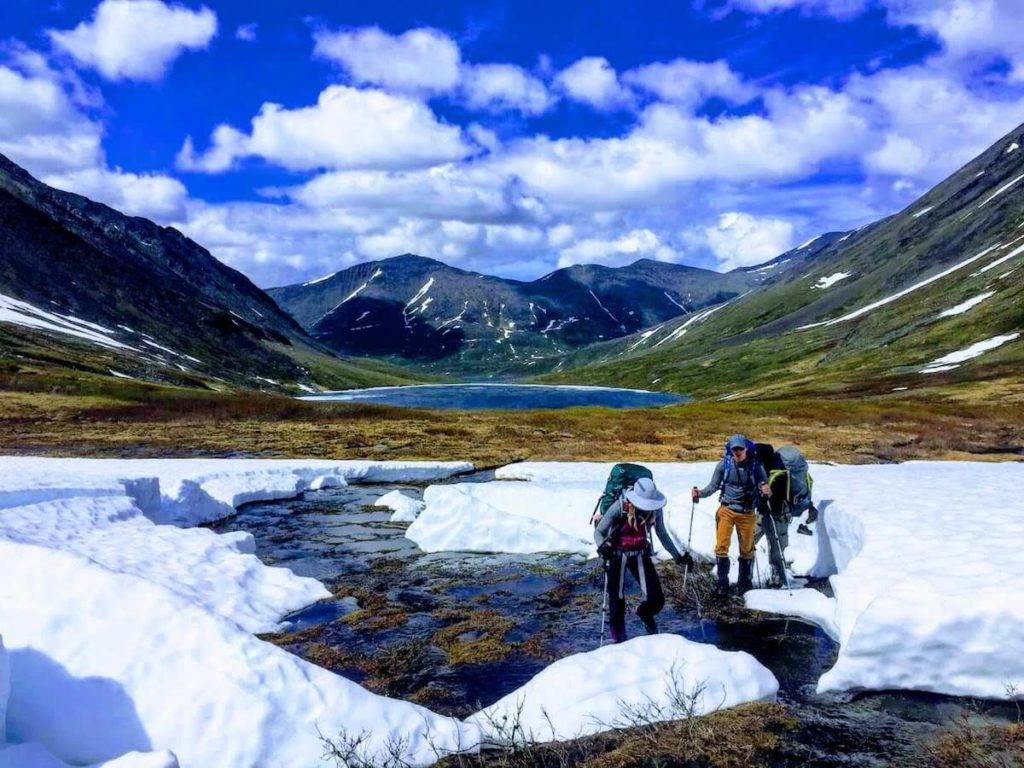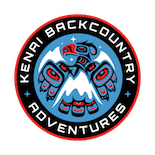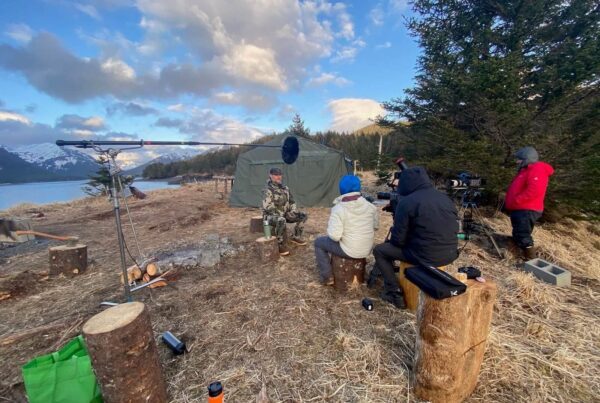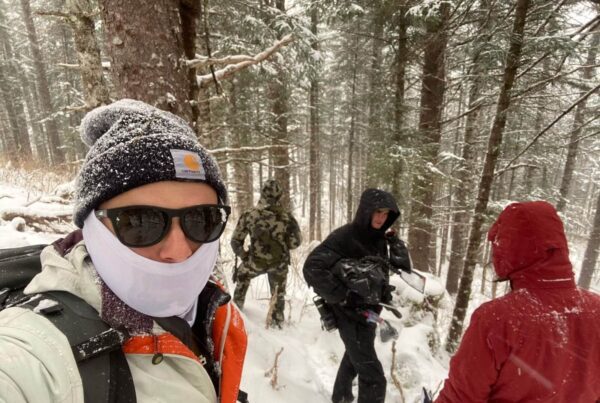Taking care of your feet while camping is one of the best gifts you can give yourself.
Here you’ll find advice from the pros—KBA Expedition Guides—on how to take care of your feet when they get cold.
 First, let’s talk about prevention.
First, let’s talk about prevention.
It is much easier to keep feet (or any body part) warm than to try and warm up your digits once they get cold. So, here are a few ways you can avoid getting cold to begin with.
STEPS TO KEEPING YOUR FEET WARM
ACT BEFORE YOU’RE COLD
Don’t wait until you start feeling cold before you do anything. Add layers when you see the sun going down, start cooking dinner, and keep moving around.
You might think that because you’re in the outdoors you need to “tough it out,” but what you’ll see experienced folks actually do is take steps early on to stay comfortable so they don’t get too cold.
STAND ON SOMETHING
Just like you insulate yourself from cold air with jackets and gloves, you can insulate your feet from the ground. Stand on a foam pad, a log, or even a piece of cardboard to keep your feet off the ground.
KEEP MOVING
Movement is one of the main ways we generate body heat, so staying in motion rather than sitting still is key.
*Pro tip: A common trick you’ll see KBA Guides doing is the “Backcountry Boogie!” In order to see what this is, you have to join us on a trip!
EAT SNACKS
Even more important than moving is giving your body the food your metabolism uses to stay warm. Eat a big dinner, spike your hot beverages with butter, do whatever you can to increase the caloric content of your food.
CHANGE YOUR SOCKS
It’s important to keep your feet as dry as possible, but that can be hard to do when you’re on a river trip, or when your feet get sweaty from hiking.
When you can’t keep your socks dry, keep an extra pair handy to change into (like after the river crossing, once you arrive in camp, and in your sleeping bag when you go to bed).
*Pro tip: When you can’t dry damp socks in the sun, tuck them inside your jacket on top of your shoulders so your socks are next to your skin or over your base layer. After a few hours (overnight is best), you’ll see that your body heat has done most of the work of drying your socks. Note that this doesn’t work with soaking wet socks.
WORK WITH THE ENVIRONMENT
If you know about the conditions ahead of time, you and your team can set yourselves up for success by traveling at the right time.
Starting early so you can get to camp before dark will leave you more time to take care of your feet in the evening. If you’re in a snowy environment, snow tends to be harder at night and early in the morning, which means you can travel on top of it instead of it getting into your boots.
When you choose a campsite, think about the sun exposure you’ll get and whether you can build a fire.
Now that you know about some important prevention points, let’s get real—your feet actually did get cold.
TIPS FOR WARMING UP CHILLY FEET
 BORROW YOUR FRIEND’S TUMMY
BORROW YOUR FRIEND’S TUMMY
Put your cold feet on a friend’s belly and hold them there until they warm up (ask permission first). You can gently rub the feet if that feels better, or just hang out for a while. (This is where you really test the strength of your friendship.)
HOT WATER BOTTLES
A hot water bottle inside your sleeping bag is a wonderful way to help you warm up. While holding hot things doesn’t really affect your core body temperature, it does feel really good, and if you’ve ever been very cold then you know that morale goes a long way!
*Pro tip: Avoid direct skin contact with a very hot bottle in case of burns. Also, if you’re traveling in bear country make sure your bottle isn’t filled with anything sugary that might attract bears.
FOOT WARMERS
These are handy to put in your boots for very cold conditions. If you like this option, we recommend finding reusable foot warmers to minimize your carbon footprint.
SUPPORT YOUR FRIENDS
An important part of traveling in a group is helping everyone take care of themselves. Ask your friends how they’re doing, and when you’re in a particularly wet or cold environment make sure you all actually look at each other’s hands and feet.
SET A GOOD EXAMPLE
Whether you’re new or an expert, be vocal about how you’re taking care of yourself and how the group can help you. Set a good example by demonstrating how you take care of your feet and keep an eye on those who are less experienced.
Learn more about winter camping on a ski or splitboarding trip.

 BORROW YOUR FRIEND’S TUMMY
BORROW YOUR FRIEND’S TUMMY


